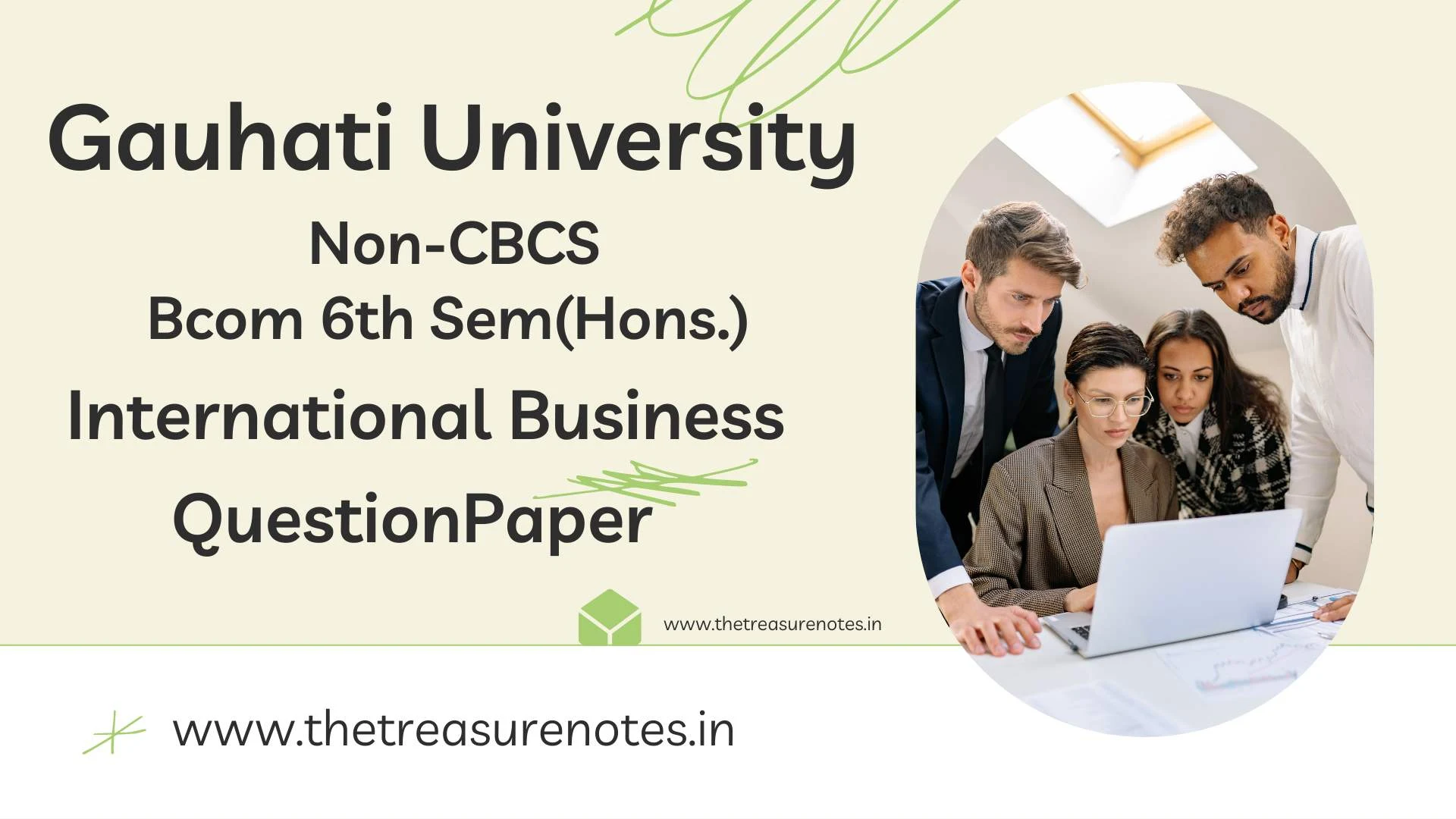In this Post we have uploaded International Business (International Trade) Question Paper 2014 Non-CBCS, B.Com 6th Sem Gauhati University (GU). which Can be Very Useful For Your GU B.Com 6th Semester Sessional or Final Semester Examination. B.com 6th International Business Question paper 2014 in PDF Gauhati University (GU).
International Business Questions Paper '2014 GU 6th Sem B.com 6th Sem Non-CBCS Pettern | Gauhati University |
Gauhati University Question Papers: International Trade (Business) (Finance Major) (Nov-Dec’ 2014)
2014
INTERNATIONAL TRADE (BUSINESS)
(FINANCE MAJOR)
Full Marks: 80
Time: 3 hours
(The figures in the margin indicate full marks for the questions)
1. [A] Select the most appropriate answer from the choices given against each: 1x5=5
1) Which of the following is/are the assumption(s) made by the theory of comparative advantage?
a) Full employment.
b) Constant returns to scale.
c) Mobility of labour within the country.
d) All of the above.
2) Which of the following is a non-tariff barrier to international trade?
a) Embargo.
b) Export duty.
c) Countervailing duty.
d) Both (a) and (b) of the above.
3) Which of the following is not true with regard to “Free Trade Area”?
a) Tariffs are removed on trade among member countries.
b) Each member country retains the right to set its own tariff to outsiders (non-member countries)
c) It is a form of trading bloc where the level of economic integration is high.
d) All of the above.
4) A company of US has excess product that it does not want to sell in its own domestic market because it will bring down the domestic price and instead sells it at another country at below the cost of production. What is this called?
a) Countervailing.
b) International trade.
c) Dumping.
d) None of the above.
5) If the UK placed a limit on the amount of steel that could be imported into the UK in a particular period, this would be an example of:
a) A quota.
b) A tariff.
c) Dumping.
d) An export subsidy.
[B] Answer the following in one sentence each: 1x5=5
1) Write the full form of UNCTAD.
2) What is ‘Duty Entitlement Pass Book’?
3) Give any two examples of non-tariff barriers to international trade.
4) Define ‘marine insurance’.
5) What is ‘Balance of Trade’?
2. Answer the following in about 50 words each: 2x5=10
a) State the meaning of Foreign Exchange as defined under FEMA.
b) What is the purpose of ‘most favoured nation’ clause of GATT?
c) What do you mean by ‘green field investment’?
d) What is ‘revolving letter of credit’?
e) Define the term ‘embargo’.
3. Answer any four of the following in about 150 words each: 5x4=20
a) Explain the meaning of ‘term of trade’.
b) How is the exchange rate of two currencies determined under the purchasing power parity theory?
c) State the demerits of foreign exchange control.
d) Write a short note on GATS.
e) What are the functions of ASEAN?
f) Discuss the benefits a country derives by importing.
4. Answer the following in about 600 words each: 10x4=40
(a) Explain the basic differences between international trade and domestic trade. 10
Or
Discuss the Heckscher-Ohlin theory of international trade and its limitations.
(b) What do you mean by tariff? Discuss the various effects of tariff. 5+5=10
Or
Enumerate the role of Export and Import Bank of India in promoting international trade. 10
(c) What are the causes of changes in the exchange rate of two currencies? Discuss. 10
Or
Give a brief account of various agencies which are helping in international trade. 10
(d) Explain the functions of UNCTAD. How far it has been able in promoting trade and development of less developing countries? 5+5=10
Or
State the objectives of forming trading blocs. How do trading blocs help in promoting international trade? Discuss. 5+5=10
-000-

